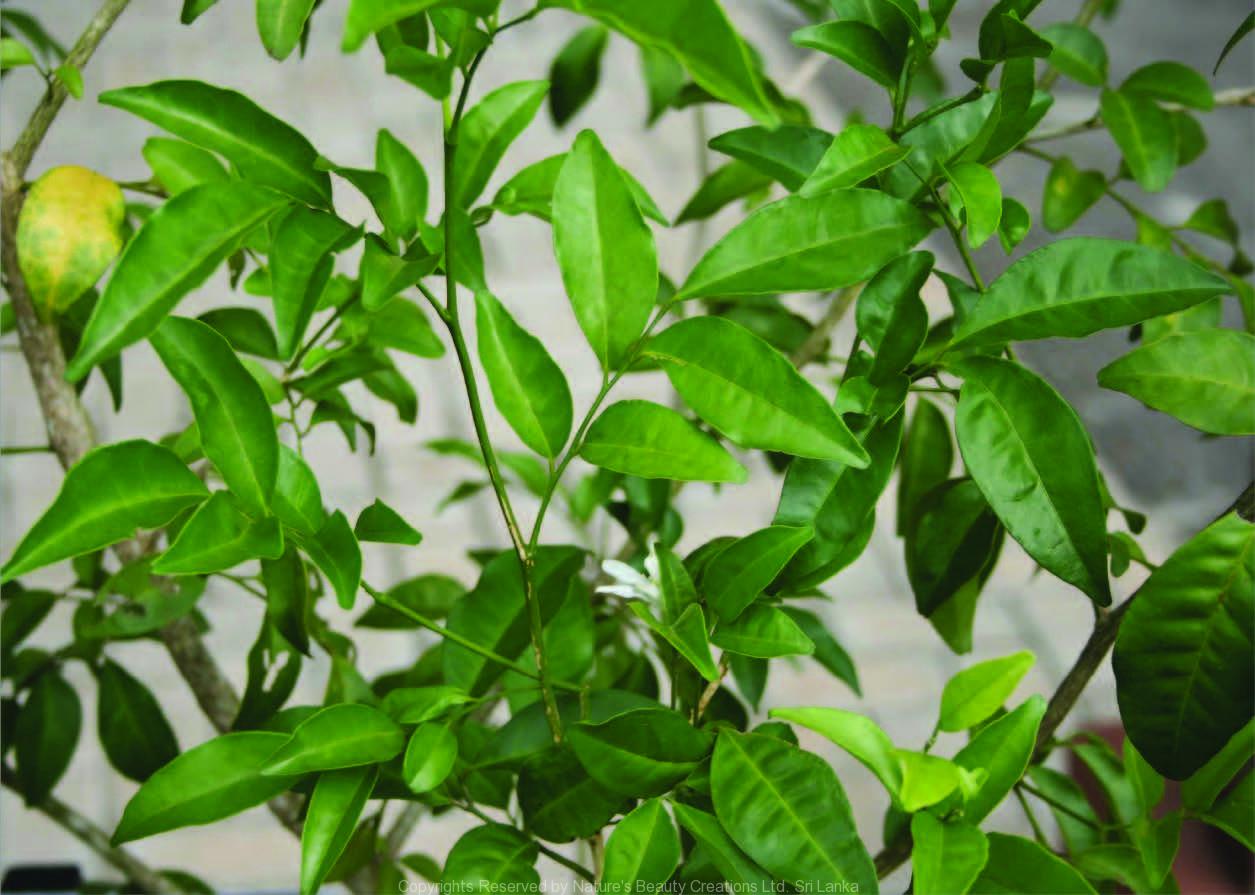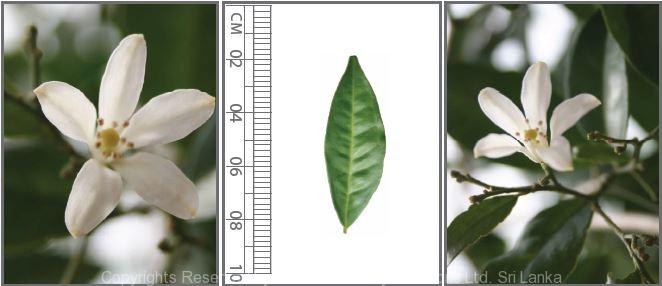

Traditional Knowledge
Useful plant parts :
Root, stem and leaf
Uses in traditional medicine :
- Leaf powder is applied on fresh cuts in the skin
- Ground root is applied on scorpion stings
- Decoction of the leaves is taken as a diuretic
- Root bark is used as an anodyne
- Stem bark is used to treat diarrhoea
Scientific Research
Chemical constituents:
Indole alkaloid: yuehchukene from roots; terpenes: β-cyclocitral, trans-nerolidol, α-cubeben, β-caryophyllene from fruit and leaf essential oil; coumarins: murranganone, paniculatin, murrmerazin, murralonginal, minumicrolin, murrangatin from leaves and aerial parts
Bioactivity :
Yuehchukene: anti-implantation activity; methanol and acetone extracts of plant: antibacterial; murranganone and paniculatin: cholinesterase inhibitors; leaf essential oil: antioxidative
Clinical:
References : Choudhary, M. I. et al., (2002), A new coumarin from Murraya paniculata, Planta Med, 68(1), 81-3. Kong, Y. C. et al., (1985), Yuehchukene: a Novel lndole Alkaloid with Anti-implantation Activity, Journal of the Chemical Society, 1, 47-48. Olawore, N. O. et al., (2005), Chemical composition of the leaf and fruit essential oils of Murraya paniculata (L.) Jack. (Syn. Murraya exotica Linn.), Flavour and Fragrance Journal, 20, 54–56. Rodríguez, E. J. et al., (2012), Chemical composition, antioxidant properties and antimicrobial activity of the essential oil of Murraya paniculata leaves from the mountains of Central Cuba, Nat Prod Commun, 7(11), 1527-30. Saied, S. et al., (2008), Two new coumarins from Murraya paniculata, J Asian Nat Prod Res, 10(5-6), 515-9. Vaghasiya, Y. and Chanda, S.V., (2007), Screening of Methanol and Acetone Extracts of Fourteen Indian Medicinal Plants for Antimicrobial Activity, Turkish Journal of Biology, 31, 243-248.
Copyrights Reserved By
Natures Beauty Creations




